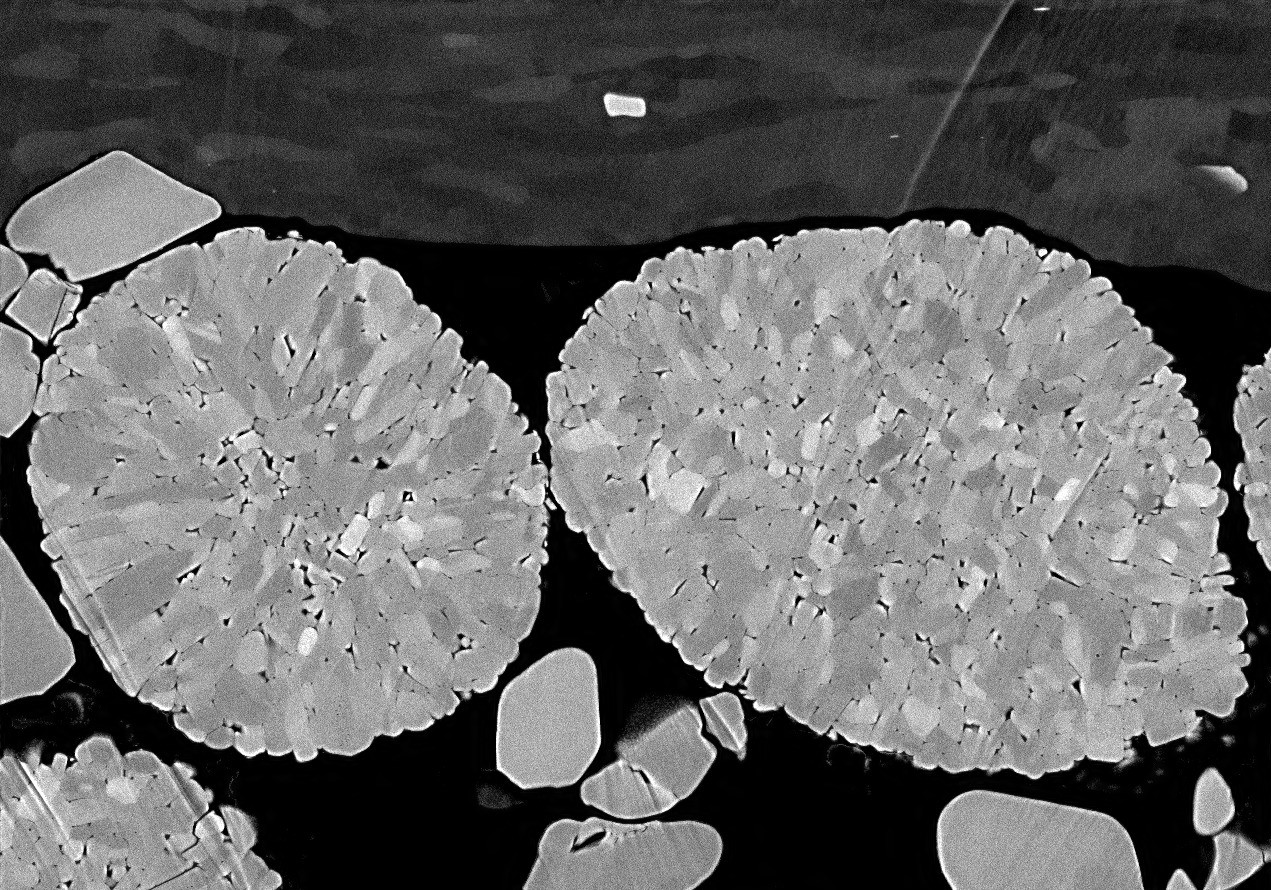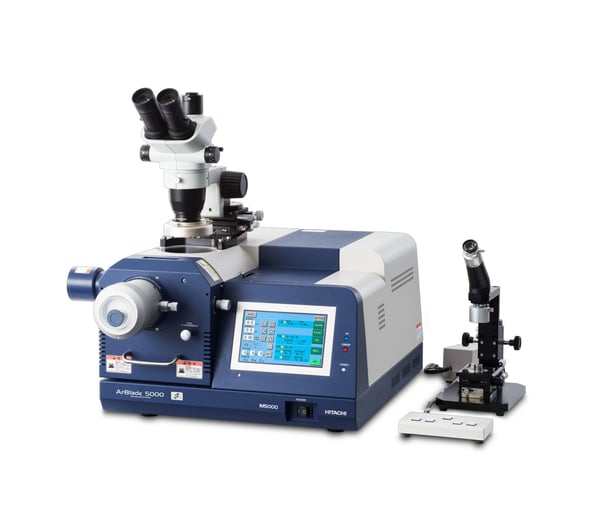
2 min read
Preparing complex samples for analysis with Hitachi’s ArBlade 5000 ion milling system
Mar 15, 2024 12:54:22 PM
Ion milling is a powerful sample preparation technique which benefits professionals in a wide range of industries and academic fields, giving them dynamic insights into complex and enigmatic microscale structures, compositions, and material interactions. Recently, we spoke to our Applications Manager at Hitachi High-Tech Europe to provide his expert insights into this innovative method.
What is an Ion Milling system?
An Ion Milling system is a device that shoots a concentrated beam of ionized argon atoms toward a sample, removing material from it - much like sand in the sand blasting industry.
The purpose of an Ion Milling system such as Hitachi’s ArBlade 5000 is to produce a very nicely polished surface that has superior quality to that which can be achieved using conventional mechanical polishing techniques. With this approach, you can analyze grain structures, layer structures, and can perform EBSD analysis with optimum indexing rates.
You can also directly prepare cross-sections through thin samples without any chemical distortion. Unlike conventional mechanical methods such as cutting with scissors, for example, the material will remain in its natural undisturbed state, allowing you to see the specimen’s true nature.
What benefits can customers expect when using the ArBlade 5000?
The main benefit is achieving qualities in cross-section preparation and sample surface preparation which you simply cannot get using classical means - with minimal learning, minimal effort, and in a reasonable time.
What sectors and industries can the ArBlade 5000 benefit?
I would say every sector and industry that needs to see inside the specimen to study its nature and understand production processes. Everybody can benefit because argon ion milling prepares cross-sections without the risk of mechanical forces damaging them during preparation.
This instrument is useful for anyone from individuals working with lithium-ion batteries who need to section cathodes, check the layer thickness of anodes, compaction ratio, mixing uniformity, and so forth, to the coating industry, which needs to check film adhesion and homogeneity. Put simply, the ArBlade 5000 is beneficial for anyone who wants to see what is inside a sample.

How does the ArBlade 5000 compare to other market competitors?
It is an immensely powerful machine. Due to the single ion gun, it is incredibly maintenance efficient, and the user can perform routine maintenance without the need for specialist servicing. You don’t need to swap the entire gun: you can replace individual components depending on their level of wear and tear.
The ArBlade 5000 has an ultra-wide cross-sectioning capability, with the section’s quality remaining constant throughout the entire width of the cross-section due to a constant overlay between anti-curtaining swing and lateral shift. Cross-sectioning can be performed with an exactly defined width – as wide as necessary.
The system also has a range of optional accessories, which are highly beneficial for the user. It has a multi-sample holder for people who need to do many cross-sections in a routine manner, with the ability to set and process up to three samples at once. Dedicated cryo capabilities for heat-sensitive samples such as polymer fuel cells or paper polymer coatings can be offered as well.
For surface polishing, the ArBlade 5000 has a flat milling capability. Additionally, the system has the largest sample stage in the industry, up to 50 mm wide and 25 mm tall, with external processing possible. Furthermore, the lowest acceleration voltages, even below 1 kV, are possible with the same ion gun, meaning that optimal preparation for EBSD analysis, even on soft materials, can be easily done in a single process step.
As an Electron Microscopy expert, what is your favourite feature and why?
It’s difficult to pick out just one. I like the design, the ease-of-use and especially the capabilities of this machine - I have been working with Electron Microscopes now for nearly 30 years and the quality of cross-sections, the insights you gain into difficult to prepare samples using ion milling is amazing. So, use it, enjoy it, you will have fun!